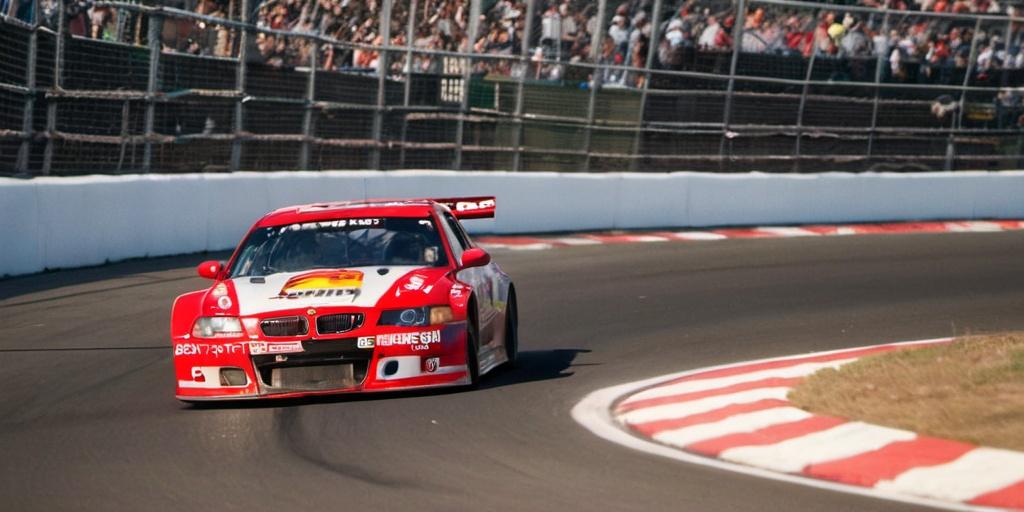NASCAR, short for the National Association for Stock Car Auto Racing, is the main sanctioning body for stock car racing in the United States. Founded in 1948, NASCAR oversees multiple racing series, the most prominent of which is the NASCAR Cup Series. The organization operates largely in North America and is distinct from Formula 1 in format, car design, race strategy, and audience appeal.
Stock car racing under NASCAR’s governance has grown into one of the most commercially successful motorsport products in the world, particularly during its peak from the 1990s to the mid-2000s. While its global visibility is more limited than Formula 1, it remains highly influential within American motorsport and culture.
Origins and Development
NASCAR was formed in Daytona Beach, Florida, by Bill France Sr., who recognized the need to unify and regulate stock car racing, which at the time was loosely organized and regionally fragmented. The first official NASCAR-sanctioned race took place in 1948, and the inaugural Cup Series (then known as the Strictly Stock Division) was held in 1949.
The early years of NASCAR were defined by races on dirt tracks and the use of production-based vehicles with minimal modification. As safety standards evolved, the cars became purpose-built for racing, though they maintained the appearance of production models.
In 1959, NASCAR opened Daytona International Speedway, which remains its most iconic venue. The Daytona 500 quickly became the flagship event of the season, often called the “Super Bowl of Stock Car Racing.”
NASCAR Cup Series
The NASCAR Cup Series is the top level of competition. It runs from February to November, with around 36 points-paying races held at tracks across the United States. The tracks include ovals, tri-ovals, road courses, and superspeedways.
Each race weekend typically includes practice sessions, a qualifying format (now often time-constrained or group-based), and the main event. Points are awarded based on finishing position, stage finishes, and laps led. Since 2017, races have been split into three stages to encourage more aggressive racing throughout the event, with points awarded at each stage break.
The Playoff System was introduced in 2004 and modified multiple times since. It currently features a four-round elimination format involving 16 drivers, culminating in a final race where the highest finisher among four remaining contenders wins the championship. This system contrasts heavily with Formula 1’s cumulative points model.
Car Specifications
NASCAR uses standardized stock cars, which differ significantly from Formula 1’s open-wheel, highly aerodynamic machines. The current “Next Gen” car, introduced in 2022, features a tubular steel chassis, a 5.86-liter naturally aspirated V8 engine, rear-wheel drive, and a sequential gearbox.
Cars are designed for high-speed stability and close-quarters racing. Body styles reflect three manufacturers: Chevrolet, Ford, and Toyota. All cars are tightly regulated in terms of performance, with strict rules on aerodynamics, engine output, and component use to preserve parity.
Unlike F1, where aerodynamics dominate performance, NASCAR prioritizes mechanical grip, drafting, and racecraft in tight traffic. Pit stops are also manual and timed with hand tools, preserving a more traditional, physical aspect to the sport.
Race Formats and Tracks
Most NASCAR races are held on oval circuits, with track lengths ranging from short tracks (under 1 mile) to superspeedways like Talladega and Daytona (over 2.5 miles). The sport has also expanded its calendar to include more road courses, including Circuit of the Americas and the Charlotte Roval.
Races are long, often exceeding 300 miles or three hours in length. Caution periods for crashes or debris are common and reset the field, allowing for more frequent lead changes. Double-file restarts, green-white-checkered finishes, and stage breaks make NASCAR races more fragmented and strategic.
Track types significantly affect racing style. On superspeedways, drafting and pack racing dominate, with lead changes happening every lap. On short tracks, brake management, tire wear, and contact-based overtaking are more prevalent. Road courses introduce braking zones and elevation changes, giving drivers with broader skillsets a relative advantage.
Comparison to Formula 1
Formula 1 and NASCAR are often compared due to their prominence, but the formats differ substantially. F1 focuses on international circuits, precision aerodynamics, hybrid engines, and driver-team partnerships shaped by engineering. NASCAR leans into spectacle, mechanical parity, high-contact racing, and fan accessibility.
F1 drivers race with limited radio interference and emphasis on tire and fuel strategy. NASCAR races are broadcast with near-constant radio chatter, open driver-crew communication, and heavy involvement from spotters positioned around the track.
In F1, qualifying is critical; in NASCAR, the field is more fluid due to caution periods and race interruptions. Strategy in NASCAR must account for frequent resets and unpredictable cautions. In F1, clean air and tire degradation dominate planning.
Fan Base and Media
NASCAR’s primary audience is U.S.-based, particularly concentrated in the southern states. The sport saw its largest growth during the 1990s, driven by figures like Dale Earnhardt, Jeff Gordon, and media deals that brought races to national television. Attendance and TV ratings peaked in the early 2000s but have since declined, though digital media and streaming platforms have introduced new opportunities.
Fan interaction is encouraged. Garage access, driver meet-and-greets, and infield camping are common. Races are marketed as all-day events, often including concerts, fan zones, and sponsor activations.
Safety and Regulation
NASCAR’s safety record improved significantly after the death of Dale Earnhardt Sr. in 2001, which led to the implementation of the HANS device, SAFER barriers, Car of Tomorrow, and modern helmet standards. The Next Gen car includes a center-locking wheel system, better driver compartment reinforcement, and improved energy absorption during impacts.
Race control is centralized and monitored in real time by officials. Post-race inspections are strict, with disqualifications for weight infractions, illegal parts, or failure to meet ride height requirements.
Development Series and Structure
NASCAR oversees several lower-tier series:
- Xfinity Series: The second-tier national series, often seen as a developmental league for future Cup drivers.
- Craftsman Truck Series: Stock truck racing with different dynamics and tracks.
- ARCA Menards Series: Entry-level series focusing on young drivers and regional racing.
- NASCAR Whelen Modified Tour and Pinty’s Series in Canada also operate under NASCAR governance.
These provide a ladder system not unlike Formula 1’s junior series (F2, F3), though progression is less linear and influenced more by sponsorship, team relationships, and regional performance.
Global Influence
Though NASCAR is primarily an American series, it has expanded slightly through NASCAR Mexico Series, NASCAR Euro Series, and occasional exhibition races. International drivers such as Juan Pablo Montoya, Jacques Villeneuve, and Kimi Räikkönen have entered NASCAR races, often through one-off appearances.
Crossover interest remains limited, but recent appearances by F1 drivers and participation by celebrities have introduced new audiences. However, NASCAR remains focused on its domestic base and traditional race formats.
Summary
NASCAR is a distinct motorsport product built around mechanical parity, oval racing, and fan-oriented presentation. It differs significantly from Formula 1 in terms of structure, car design, race execution, and audience. Still, it remains one of the most followed racing series in the world, with a long history, dedicated teams, and a loyal fanbase.
While its influence is mostly regional, NASCAR continues to evolve—balancing tradition with modern broadcasting, safety improvements, and global curiosity about the American approach to professional racing.


